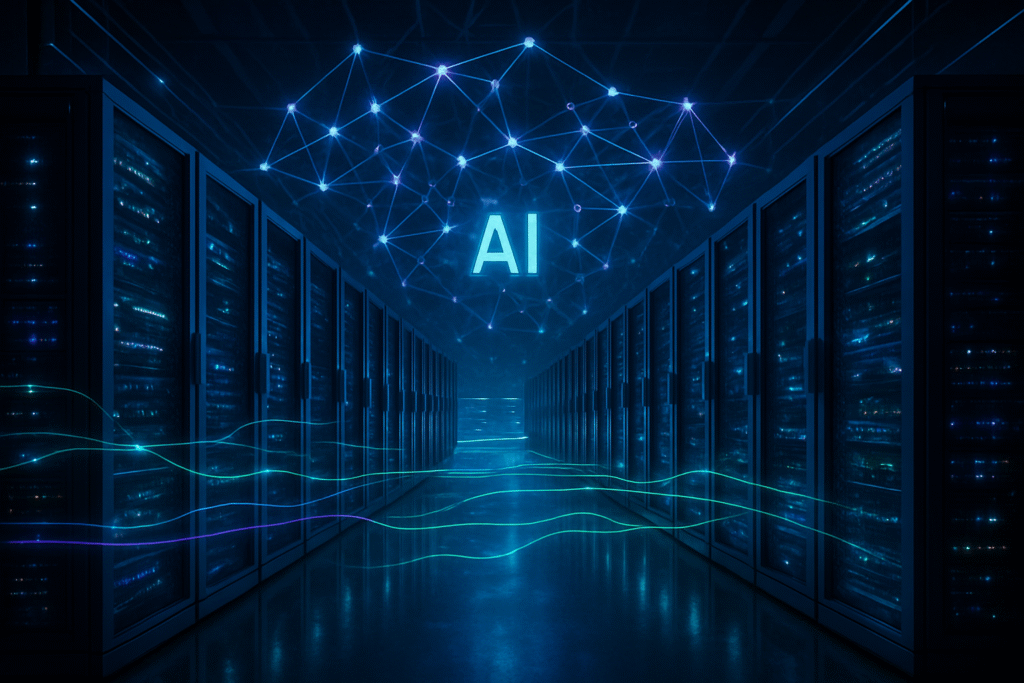
San Jose, California – October 14, 2025 – Advanced Micro Devices (NASDAQ: AMD) today unveiled its groundbreaking “Helios” rack-scale platform at the Open Compute Project (OCP) Global Summit, marking a pivotal moment in the quest for open, scalable, and high-performance infrastructure for artificial intelligence workloads. Designed to address the insatiable demands of modern AI, Helios represents AMD's ambitious move to democratize AI hardware, offering a powerful, standards-based alternative to proprietary systems and setting a new benchmark for data center efficiency and computational prowess.
The Helios platform is not merely an incremental upgrade; it is a comprehensive, integrated solution engineered from the ground up to support the next generation of AI and high-performance computing (HPC). Its introduction signals a strategic shift in the AI hardware landscape, emphasizing open standards, robust scalability, and superior performance to empower hyperscalers, enterprises, and research institutions in their pursuit of advanced AI capabilities.
Technical Prowess and Open Innovation Driving AI Forward
At the heart of the Helios platform lies a meticulous integration of cutting-edge AMD hardware components and adherence to open industry standards. Built on the new Open Rack Wide (ORW) specification, a standard championed by Meta Platforms (NASDAQ: META) and contributed to the OCP, Helios leverages a double-wide rack design optimized for the extreme power, cooling, and serviceability requirements of gigawatt-scale AI data centers. This open architecture integrates OCP DC-MHS, UALink, and Ultra Ethernet Consortium (UEC) architectures, fostering unprecedented interoperability and significantly mitigating the risk of vendor lock-in.
The platform is a powerhouse of AMD's latest innovations, combining AMD Instinct GPUs (including the MI350/MI355X series and anticipating future MI400/MI450 and MI500 series), AMD EPYC CPUs (featuring upcoming “Zen 6”-based “Venice” CPUs), and AMD Pensando networking components (such as Pollara 400 and “Vulcano” NICs). This synergistic integration creates a cohesive system capable of delivering exceptional performance for the most demanding AI tasks. AMD projects future Helios iterations with MI400 series GPUs to deliver up to 10 times more performance for inference on Mixture of Experts models compared to previous generations, while the MI350 series already boasts a 4x generational AI compute increase and a staggering 35x generational leap in inferencing capabilities. Furthermore, Helios is optimized for large language model (LLM) serving, supporting frameworks like vLLM and SGLang, and features FlashAttentionV3 for enhanced memory efficiency.
This open, integrated, and rack-scale design stands in stark contrast to more proprietary, vertically integrated AI systems prevalent in the market. By providing a comprehensive reference platform, AMD aims to simplify and accelerate the deployment of AI and HPC infrastructure for original equipment manufacturers (OEMs), original design manufacturers (ODMs), and hyperscalers. The platform’s quick-disconnect liquid cooling system is crucial for managing the high power density of modern AI accelerators, while its double-wide layout enhances serviceability – critical operational needs in large-scale AI data centers. Initial reactions have been overwhelmingly positive, with OpenAI, Inc. engaging in co-design efforts for future platforms and Oracle Corporation’s (NYSE: ORCL) Oracle Cloud Infrastructure (OCI) announcing plans to deploy a massive AI supercluster powered by 50,000 AMD Instinct MI450 Series GPUs, validating AMD’s strategic direction.
Reshaping the AI Industry Landscape
The introduction of the Helios platform is poised to significantly impact AI companies, tech giants, and startups across the ecosystem. Hyperscalers and large enterprises, constantly seeking to scale their AI operations efficiently, stand to benefit immensely from Helios's open, flexible, and high-performance architecture. Companies like OpenAI and Oracle, already committed to leveraging AMD's technology, exemplify the immediate beneficiaries. OEMs and ODMs will find it easier to design and deploy custom AI solutions using the open reference platform, reducing time-to-market and integration complexities.
Competitively, Helios presents a formidable challenge to established players, particularly Nvidia Corporation (NASDAQ: NVDA), which has historically dominated the AI accelerator market with its tightly integrated, proprietary solutions. AMD's emphasis on open standards, including industry-standard racks and networking over proprietary interconnects like NVLink, aims to directly address concerns about vendor lock-in and foster a more competitive and interoperable AI hardware ecosystem. This strategic move could disrupt existing product offerings and services by providing a viable, high-performance open alternative, potentially leading to increased market share for AMD in the rapidly expanding AI infrastructure sector.
AMD's market positioning is strengthened by its commitment to an end-to-end open hardware philosophy, complementing its open-source ROCm software stack. This comprehensive approach offers a strategic advantage by empowering developers and data center operators with greater flexibility and control over their AI infrastructure, fostering innovation and reducing total cost of ownership in the long run.
Broader Implications for the AI Frontier
The Helios platform's unveiling fits squarely into the broader AI landscape's trend towards more powerful, scalable, and energy-efficient computing. As AI models, particularly LLMs, continue to grow in size and complexity, the demand for underlying infrastructure capable of handling gigawatt-scale data centers is skyrocketing. Helios directly addresses this need, providing a foundational element for building the necessary infrastructure to meet the world's escalating AI demands.
The impacts are far-reaching. By accelerating the adoption of scalable AI infrastructure, Helios will enable faster research, development, and deployment of advanced AI applications across various industries. The commitment to open standards will encourage a more heterogeneous and diverse AI ecosystem, allowing for greater innovation and reducing reliance on single-vendor solutions. Potential concerns, however, revolve around the speed of adoption by the broader industry and the ability of the open ecosystem to mature rapidly enough to compete with deeply entrenched proprietary systems. Nevertheless, this development can be compared to previous milestones in computing history where open architectures eventually outpaced closed systems due to their flexibility and community support.
The Road Ahead: Future Developments and Challenges
Looking ahead, the Helios platform is expected to evolve rapidly. Near-term developments will likely focus on the widespread availability of the MI350/MI355X series GPUs within the platform, followed by the introduction of the more powerful MI400/MI450 and MI500 series. Continued contributions to the Open Compute Project and collaborations with key industry players are anticipated, further solidifying Helios's position as an industry-standard.
Potential applications and use cases on the horizon are vast, ranging from even larger and more sophisticated LLM training and inference to complex scientific simulations in HPC, and the acceleration of AI-driven analytics across diverse sectors. However, challenges remain. The maturity of the open-source software ecosystem around new hardware platforms, sustained performance leadership in a fiercely competitive market, and the effective management of power and cooling at unprecedented scales will be critical for long-term success. Experts predict that AMD's aggressive push for open architectures will catalyze a broader industry shift, encouraging more collaborative development and offering customers greater choice and flexibility in building their AI supercomputers.
A Defining Moment in AI Hardware
AMD's Helios platform is more than just a new product; it represents a defining moment in AI hardware. It encapsulates a strategic vision that prioritizes open standards, integrated performance, and scalability to meet the burgeoning demands of the AI era. The platform's ability to combine high-performance AMD Instinct GPUs and EPYC CPUs with advanced networking and an open rack design creates a compelling alternative for companies seeking to build and scale their AI infrastructure without the constraints of proprietary ecosystems.
The key takeaways are clear: Helios is a powerful, open, and scalable solution designed for the future of AI. Its significance in AI history lies in its potential to accelerate the adoption of open-source hardware and foster a more competitive and innovative AI landscape. In the coming weeks and months, the industry will be watching closely for further adoption announcements, benchmarks comparing Helios to existing solutions, and the continued expansion of its software ecosystem. AMD has laid down a gauntlet, and the race for the future of AI infrastructure just got a lot more interesting.
This content is intended for informational purposes only and represents analysis of current AI developments.
TokenRing AI delivers enterprise-grade solutions for multi-agent AI workflow orchestration, AI-powered development tools, and seamless remote collaboration platforms.
For more information, visit https://www.tokenring.ai/.






